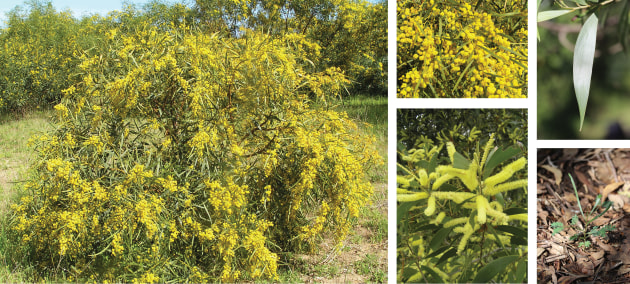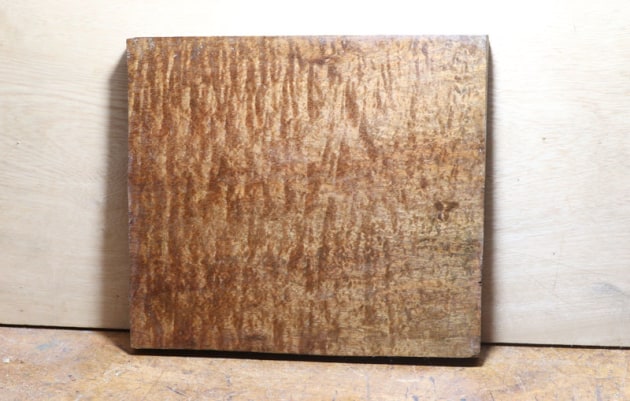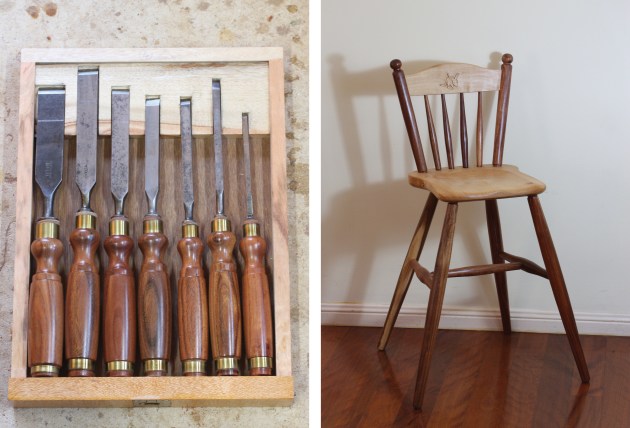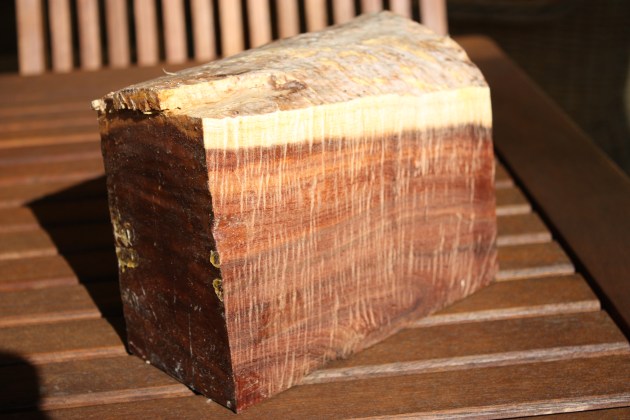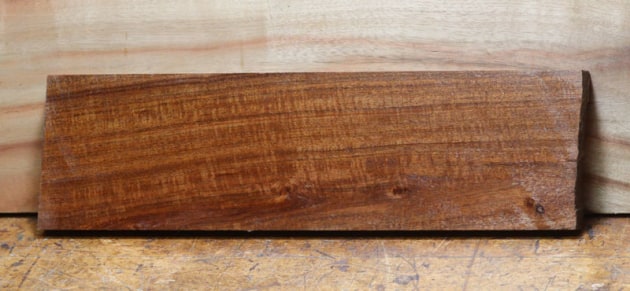Working with wattles
Above: Familiar flowers and foliage of Acacia, a genus that includes, according to some sources, 1200–1300 species,1000 of which grow in Australia. The veins in their leaves run parallel to the edges instead of branching off a central rib, and most species produce yellow flowers. Seedlings start out with compound leaves but later their leaf-like stems or phyllodes develop.
Words and photos: Ian Wilkie
In Australia, our mainland forests (excluding the relatively small areas of rainforest), are dominated by two genera of trees, Eucalyptus and Acacia. Many of the latter are commonly known as ‘wattles’ and very few people in Australia would not be familiar with the sight of a wattle in flower, they can be very eye-catching (and grace our national coat-of-arms). The flowers are mostly yellow, either single ‘pom-poms’ of fluffy stamens, or smaller individual flowers that form short racemes like mini sheep’s tails.
The name ‘black wattle’ was given by early colonists to an unrelated shrubby tree (Callicoma serratifolia), the long, supple branches of which they used to make their wattle and daub shelters. The name wattle subsequently migrated to the acacias, presumably due to the vaguely similar flowers, and is now the universal common name for the majority of acacias that haven’t retained indigenous or other descriptive common names.
Acacias have adapted to an even wider range of habitats than the eucalypts. This is in part due to the majority of species having dispensed with true leaves; instead they have evolved modified, leaf-like stems (called phyllodes) which better control water loss. The most obvious difference from ‘normal’ leaves is that the veins run parallel to the edges instead of branching off a central rib.
Seedlings start out with true compound leaves but by the time they are about 150mm high, they have begun to abandon these for the flattened stems which become the new ‘leaves’. And by the time it is a few hundred millimetres high, there is no trace of the original leaves.
Anatomical changes plus the symbiotic microbes associated with their roots that ‘fix’ atmospheric nitrogen allow acacias to survive in a very wide range of habitats. There are acacias in tropical rainforests (A. aulacocarpa known as salwood), in temperate rainforest (A.melanoxylon or ‘blackwood’), as an understorey tree in eucalypt dominated forests,
as a dominant species in semi-closed forests such as brigalow (A.harpophyla) and mulga (A.aneura), and as scruffy shrubs in some of the most arid areas of the continent where eucalypts cannot survive. Many species can act as pioneer plants, re- populating cleared and degraded land due to their prolific seed production and ability to grow in degraded soils.
Of the many hundreds of species of Acacia, few grow to millable logs, however many species produce useful and highly attractive wood appropriate for crafts and projects that don’t require large dimensions. Given the range of growing conditions it is unsurprising that the woods show a wide range of working properties. As a general rule, those from arid areas tend to be denser and harder, while those growing under more favourable conditions tend to be softer and easier to work.
The heartwood of most species ranges from mid to dark or very dark brown, and the texture from very fine to coarse. Species such as gidgee, (A.cambagei) produce highly figured heartwood with some frequency whilst others like brigalow (A.harpophylla) tend to be almost universally straight grained. A feature of many acacia woods is the presence of small golden highlights that give a subtle chatoyance to the polished surface. This can be very obvious in some samples whilst others require strong light to demonstrate this feature. The following is a very brief list of species with which I am familiar, along with my personal opinions of their properties and uses.
Above: Blackwood (A.koa) can be spectacularly figured, ranging from fiddleback to complex patterns resembling crushed velvet.
1. Blackwood
Acacia melanoxylon would be the best-known of the acacias, being widely available and in relatively good supply. Tasmania is the source of much prime material, but the species occurs all along the east coast of the mainland, from the Otways in Victoria to north Queensland. Paradoxically, the trees tend to become smaller the further north they grow, and rarely reach more than small log size outside the two southern states.
Blackwood was once referred to as ‘Australian walnut’, which is a fair comparison as the two can be very similar in appearance and workability, though blackwood has quite a wide range of colour and density. On average, it is not difficult to work with hand or powered tools, it polishes easily and accepts a variety of finishes. The colour mellows on exposure to light to a soft mid-brown very similar to black walnut (Juglans nigra).
In general, it is a tough, durable wood that planes, turns and carves relatively easily, accepts a variety of finishes and is well-suited to a range of cabinetmaking requirements. My biggest complaint with blackwood is that its variability of colour can make it hard to match parts for larger pieces of furniture.
Like its cousin koa (A.koa), native to Hawaii, blackwood can be spectacularly figured ranging from regular fiddleback to highly complex patterns resembling crushed velvet.
I have only worked with a limited amount of highly figured material from five or six different batches, but what I had was relatively easy to plane without tear-out, though it did need care when chiselling or paring to avoid splitting along the irregular grain and spoiling crisp edges or flat surfaces (a feature common to all highly figured woods, of course).
Above: "Acacia implexa or hickory wattle from my backyard wattles makes excellent chisel handles, while straight sections of black wattle usually turn well, as in the spindles for chairs."
2. Black wattle
In the southern states, black wattle is the common name for A.mearnsii, a small tree with pale brown heartwood, but the name black wattle is also applied indiscriminately to a very large number of different Acacia species that grow along the east coast.
All along the east coast it is very common to find several species of wattle occurring together as understorey shrubs or small trees, or as dense stands of several different acacias on previously cleared land that has been left to regenerate naturally. I have at least three species in my one hectare backyard (which was once eucalypt forest cleared for agriculture).
All these species tend to be short-lived and seldom attain trunk diameters more than about 350mm before succumbing to disease and borers. I have collected wood from many dead and dying specimens from several different localities that are impossible to identify accurately without phyllodes, flowers and seed pods.
However, their woods all seem to cover the same range of colours (pale to very deep brown, with the darker wood probably more related to age of the tree than different genetic factors). They all seem to have a similarly wide range of working properties, from moderately easy to very hard and tough, depending more on the individual tree than the actual species.
Main trunks are seldom more than a metre before major branching and the very pale sapwood can be up to 30mm thick in young trees (thinner in old, less vigorous specimens) so the yield of useful wood per tree is not high. Grain tends to be somewhat irregular, with some figure around branches and root bases and a very occasional tree may display extensive figure throughout. Although the texture is usually medium-coarse, it polishes well and small, figured pieces like the infill of the small plane can be very attractive.
The species I’ve collected tend to be tough and impact resistant making them suitable for handles. Acacia implexa or hickory wattle was much favoured for hoe and brush-hook handles on the farm where I grew up, and my backyard wattles make excellent chisel handles.
As a wood for turning, it can be excellent or excrescent due to the irregular growth habit of the trees. Straight sections usually turn well and make excellent spindles for chairs, for example. Sections with wild, twisted grain can be very difficult to cut cleanly, requiring an intolerable amount of sanding and the short- grain areas make them unsuitable for load-bearing components.
Highly figured gidgee is not the easiest wood to work with hand tools but can deliver stunning colour and figure.
3. Gidgee
There are a few species lumped under this indigenous name but A. cambagei is the one you are most likely to meet. Gidgee grows under quite arid conditions so it does not make large trees, but its density makes it unsuitable for large objects like furniture. It is difficult to dry in large sections and is mostly available in smaller dimensions suitable for knife-handles and the like, but at least one supplier I deal with will find larger pieces if asked.
Straight grained gidgee is less interesting visually, but a very stable wood suited to making plane bodies. Ringed gidgee has a fine fiddleback figure and I have had pieces with a complex, swirling figure that resembles crushed fabric.
Highly figured gidgee is not the easiest wood to work with hand tools, but it will yield to sharp edges and a patient approach. Some pieces plane well but sometimes you get fine tear- out no matter how well your plane is working and scraping is the more efficient route to clean surfaces. It also has a tendency to pick out on the lathe, or chip when you are trying to chisel sharp edges, but if you are patient and careful, it will reward you with some stunning effects.
It has one final act of defiance – tiny droplets of dark gum will often bleed through a finished surface making it dull and rough to the touch. Fortunately, that is usually easily fixed. Fine steel wool will remove the gum with minimal damage and depending on the actual finish and what the item is, a quick wax and polish usually restores the surface. You may need to refinish more than once with some pieces, but eventually the wood gives up and decides to cooperate.
This handsaw made by Ian Wilkie has a red lancewood handle.
4. Red lancewood
Several species go by the common name lancewood so it is best to specify ‘red’ lancewood or use its botanical name
(A.shirleyi) when searching for any. It is widespread and locally common across much of northern Australia and can grow to a moderately sized tree. Unfortunately, it’s another wood I’ve found difficult to dry without deep end-checking, but worth the effort. It is medium difficult to work with hand tools, but the fine-grained wood turns well and takes a very high polish. It is available (erratically) in larger sized pieces more often than most of the other dry country acacias described here. It is too dense for other than very small items of furniture or boxes, but I have successfully made objects like full-sized saw handles from it.
Mulga has a fine grain and finishes well. Figured mulga like the piece shown here is hard to come by.
5. Mulga
Mulga (A. aneura) is another species that preserves an indigenous name. Mulga is also used as a name for woodland dominated by that species and in some parts of the country, as an expression of remoteness as in ‘way out in the mulga’. Mulga occurs in all mainland states except Victoria, either as isolated shrubby trees in the more arid areas or as a continuous forest of small trees in the more favourable parts of its range.
Mulga is very dense and fine-grained, with a mid to dark brown heartwood. It is very slow to dry but quite stable once equilibrated. The small size of the tree yields only small-section pieces which are usually straight grained. For such a hard dense wood it is not too difficult to work with hand tools.
Figured mulga seems to be much rarer than figured gidgee, I have only had a single small piece with a fine fiddleback figure, but what mulga lacks in figure it makes up for by being one of the finest grained of the acacias and takes a superb polish and yields ultra-smooth, highly tactile surfaces. The mulga handles of my paring chisels are a delight to hold.
Acacia pendulla aka weeping myall exudes a large amount of kino or gum vein and even when dry, freshly cut surfaces may ‘bleed’.
6. Weeping myall
Weeping myall (A.pendula) grows as a small tree either scattered amongst other species or occasionally in small clumps over a wide area of inland Qld, NSW and Victoria, mostly on alluvial soils that receive between 400 and 600mm of rain annually. It has been introduced to other states because of the appeal of its attractive weeping foliage from which the pendula part of its botanical name is derived.
When first cut, the wood exudes a large amount of kino (gum), and even when well dried it will still exude from any freshly cut surface. Some pieces I’ve had required re-finishing several times before they ceased exuding gum. When green, the wood is a deep brown with purple overtones but this fades on exposure to a medium brown. I have had a couple of samples with a fine fiddleback figure, but most has been straight grained.
Of all the acacias I’ve worked with, A.pendula was the most difficult to work with hand tools. It is not only tough, but highly abrasive, quickly dulling edge tools – I destroyed an expensive rasp on one batch! The grain is medium-coarse but finishes well whether plain or figured.
7. Western rosewood
There are several unrelated genera of trees in Australia that are called rosewood. Acacia rhodoxylon earns the title by its deep rose-coloured heartwood (from the Greek rhodos for rose). It is not related to the ‘true’ rosewoods (Dalbergia spp.), none of which occur in Australia. It is limited to Queensland, growing in sub-coastal sites from west of Maryborough to Mt Garnet. The tree is recognisable by its finely scaled bark. It grows up to 20 metres tall in favourable localities, but often has a deeply fluted trunk which restricts the size of boards that can be cut from it.
The timber is considered very durable and was used for cattle yard posts and rails in its area of occurrence. Most pieces I’ve had were straight grained, but a couple have had a fine fiddleback. I have found it to be a very difficult wood to dry in reasonably sized pieces, even with the most careful end sealing and slow drying it tends to develop deep end checks.
While A.rhodoxylon is a very dense wood, it is not particularly hard; I’ve found its workability to be very similar to true ebony. It is extremely fine- grained and generally planes well, but often contains soft streaks that tend to tear out unexpectedly. Fortunately, it scrapes easily, so if you strike this problem, just switch to a scraper and you will soon be rewarded with a glass-smooth surface. Whether plain or figured, it takes a superb, highly tactile finish with deep, fine, golden highlights that shimmer in strong light. This is another wood that is highly suited to handles and infill for small planes.
That concludes this very brief survey of some of the acacias I’ve used and found not only very useful, but very attractive woods for (mostly smaller) projects. There are many, many more acacias and no doubt many woodworkers will already have their own favourites, but if you have never worked with these woods before, they have a lot to offer.
Ian Wilkie is a retired veterinary pathologist and academic who makes furniture and hand tools. His interest in wood and tools goes back to growing up on a farm where fixing and making things was part of everyday life. He has written several articles for Wood Review magazine.



